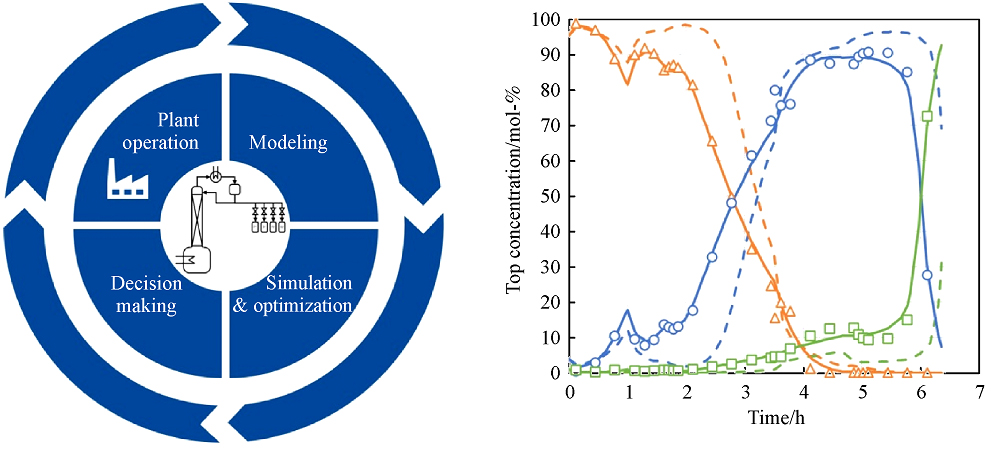Growing population and diverse regional availability of feed stocks require development of new sustainable processes and products [
1]. These developments are based on experimental investigations in lab or mini-plants as well as on simulation and optimizations using a process model. The use of a process model is to answer questions about the real process by simulation and optimization [
2] thereby reducing the effort for experimental investigations. Usually, process designers like to compare process simulations based on different what-if scenarios [
3]. One example is the evaluation of the impact of uncertainties with sensitivity analysis (SA) where a nominal scenario is compared with uncertainty scenarios [
4]. Another example is the investigation of trade-offs of different objectives, e.g., sustainability criteria, in multi-criteria optimization (MCO) problems [
5]. Pre-requisite for reliable results in these studies is a validated model. For model validation or in case of larger discrepancies model adjustment plant data are required [
1]. Measurement tags and operating data are usually available in plant information management systems like for example ASPEN IP21 or OSI PI. In cases of missing rigorous models for specific process steps, plant data can be used to setup data-driven models. These models can then be used together with rigorous models in so-called hybrid or gray box modeling [
6–
8]. Model selection and parameter estimation in model adjustment can be supported by model-based design of experiments (DoE) [
9]. At the end of the modeling based on plant data a reliable and validated model should be available, which could be used for the investigation of different what-if scenarios. To easily explore the design and decision space tools for a sound decision making are required [
1]. A scheme of a decision support framework which supports this workflow is shown in Fig. 1. Similar schemes have been discussed before [
3,
5] and tools supporting this workflow have been successively implemented within BASF’s steady state simulator CHEMASIM as can be seen in various publications [
4,
6,
10–
18]. In this contribution we discuss the extensions and modifications which were necessary to adopt these workflow tools for a use within the dynamic counterpart of CHEMASIM which is called CHEMADIS.













